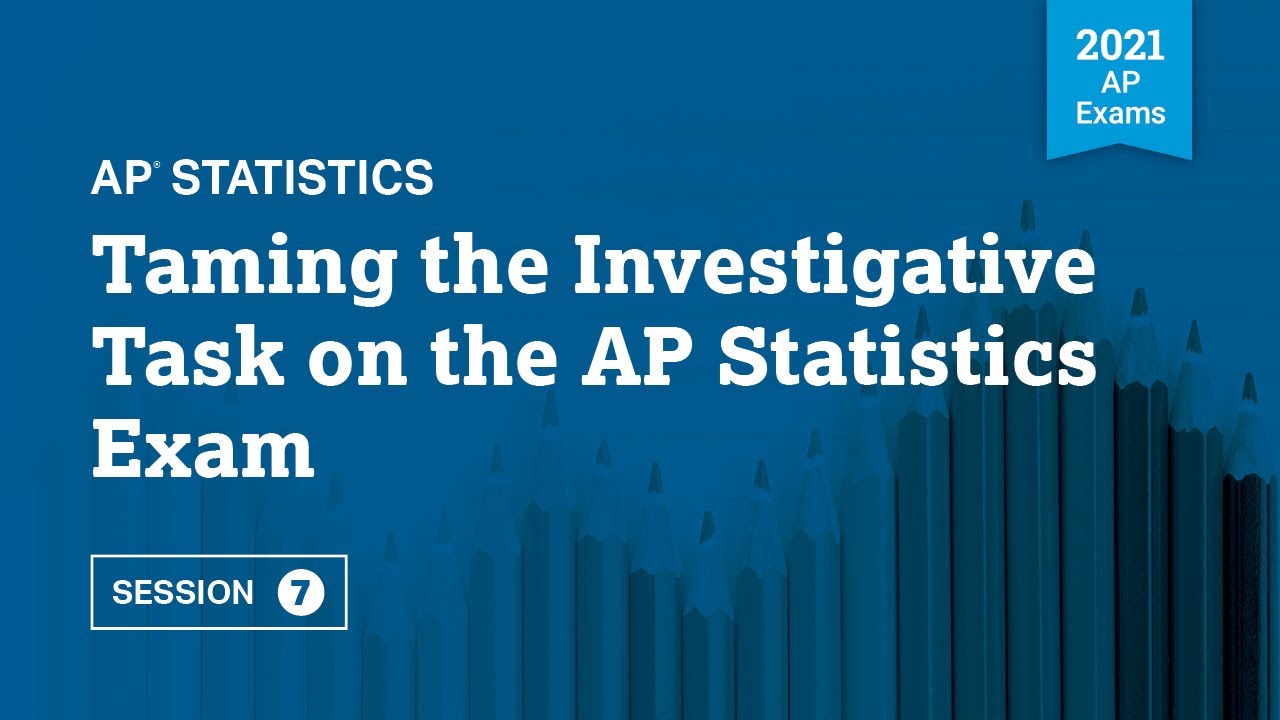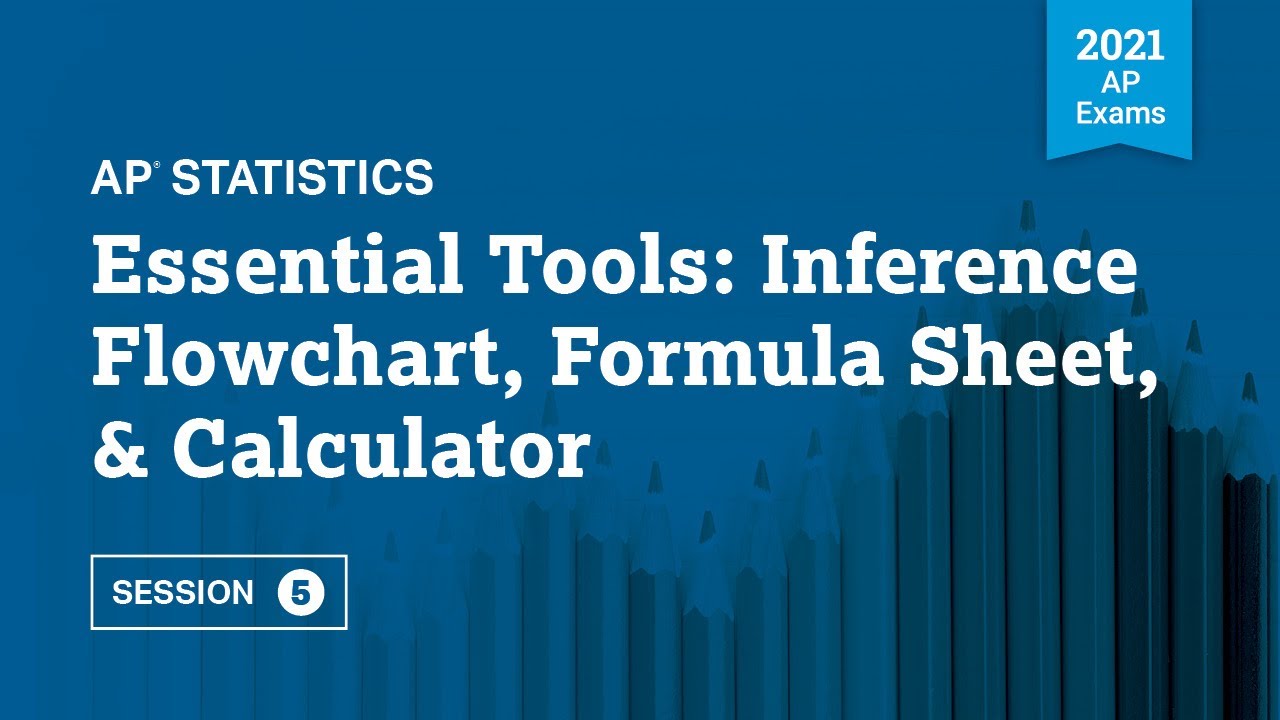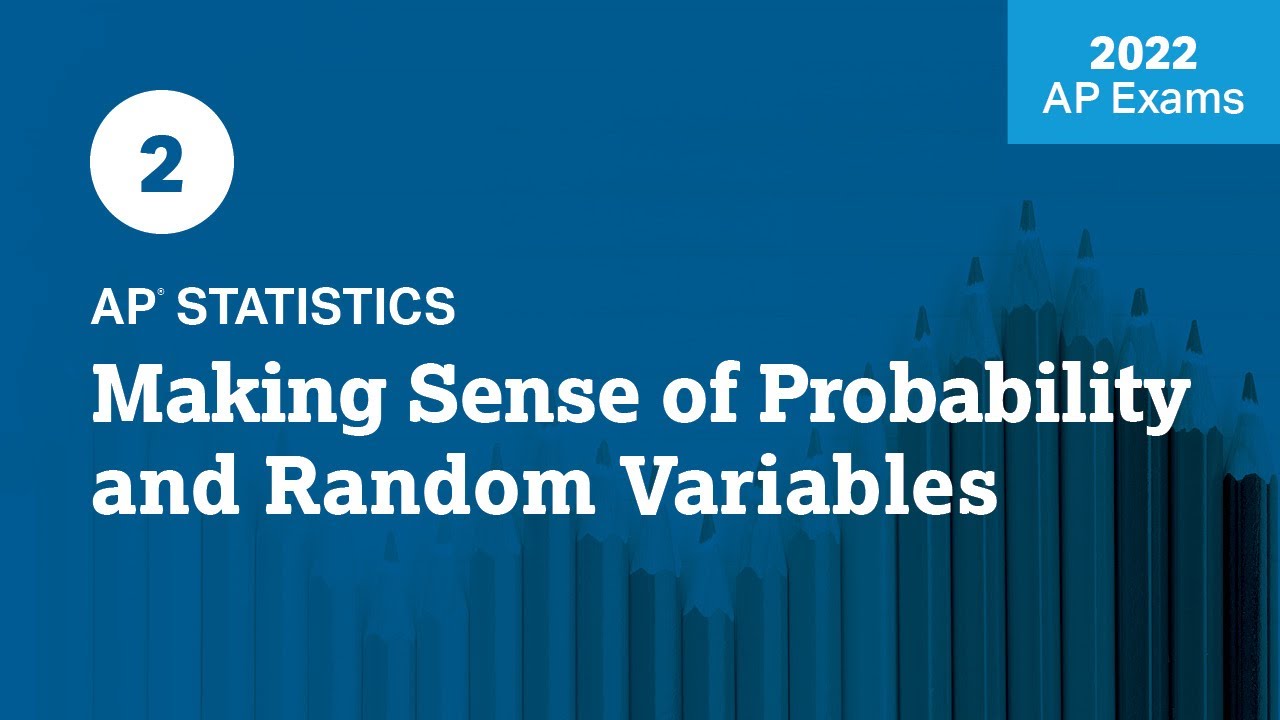4 | FRQ (Part A: Multi-Focus) | Practice Sessions | AP Statistics
TLDRIn this AP Stats tutorial, Luke Wilcox guides students through two multi-focus free-response questions. The first explores the impact of dark and white chocolate on blood pressure, comparing medians and mean reductions, and using a simulation to determine statistical significance. The second question involves a national survey on teenage soft drink consumption, analyzing proportions and constructing a segmented bar chart to compare relative frequencies across cities, and identifying the appropriate inference procedure for assessing differences among cities.
Takeaways
- 📚 Luke Wilcox introduces himself as an AP Stats teacher at East Kentwood High School and presents a session on two multi-focus free-response questions.
- 🔍 The first question explores the effect of dark chocolate, rich in flavonoids, on blood pressure reduction compared to white chocolate, which lacks these compounds.
- 👥 The study involves 25 healthy adults, with 13 in the dark chocolate group and 12 in the white chocolate group, all adding 3.5 ounces of chocolate to their diets.
- 📈 The study measures the change in blood pressure before and after chocolate consumption, with the median reduction being seven for dark chocolate and zero for white chocolate.
- 📊 The median blood pressure reduction is explicitly compared, with dark chocolate showing a greater reduction than white chocolate.
- 🧐 The mean reduction in blood pressure for dark chocolate is 6.08, and for white chocolate, it is 0.42, indicating a significant difference.
- 🤔 The script questions the certainty of the conclusion based solely on the difference in sample means, highlighting the need for statistical evidence beyond just the observed difference.
- 🔬 A simulation is conducted to investigate the blood pressure reduction effect, assuming no difference exists, which is used to estimate a p-value for the significance test.
- 📉 The simulation results show that a difference of 5.66 or greater in sample means could occur by chance in 2.5% of trials, providing strong statistical evidence in favor of dark chocolate's effect.
- 📝 The second question involves a national survey on teenage behavior regarding soft drink consumption, with data from three major cities presented in a table.
- 🗽 The claim that Baltimore teens are less likely to have consumed a soft drink is incorrect when considering the proportion rather than the raw count, with Baltimore having the highest proportion at 0.804.
- 📊 A segmented bar chart is suggested to represent the relative frequencies of teens consuming soft drinks, with San Diego having the smallest proportion at 0.65.
- 📐 The appropriate statistical test for investigating differences in proportions across the three cities is identified as a chi-square test for homogeneity, with hypotheses defined for no difference (null) and at least one difference (alternative).
Q & A
Who is the presenter of the AP Daily practice session in the transcript?
-The presenter is Luke Wilcox, an AP Stats teacher at East Kentwood High School in Kentwood, Michigan.
What is the main topic of the first free-response question in the session?
-The main topic is a study investigating whether there is a greater reduction in blood pressure for people who consume dark chocolate, which contains flavonoids, compared to those who consume white chocolate, which does not contain flavonoids.
How many participants were there in the study on chocolate and blood pressure?
-There were 25 healthy adults who participated in the study.
How were the participants divided into groups in the chocolate study?
-The participants were randomly assigned to either the dark chocolate group, which had 13 participants, or the white chocolate group, which had 12 participants.
What is the median reduction in blood pressure for the dark chocolate group according to the script?
-The median reduction in blood pressure for the dark chocolate group is seven millimeters of mercury.
What is the median reduction in blood pressure for the white chocolate group?
-The median reduction for the white chocolate group is zero, which is the average of the two middle values, negative two and two.
What is the difference between the mean reduction in blood pressure for the dark chocolate and white chocolate groups?
-The difference in the mean reduction in blood pressure between the dark chocolate and white chocolate groups is 5.66 millimeters of mercury.
Why might the researchers' conclusion based only on the difference in sample means not necessarily be true?
-The conclusion might not be true because the difference could be due to random assignment rather than the effectiveness of dark chocolate, introducing variability into the sampling distribution of the difference of sample means.
What is the null hypothesis in the significance test mentioned in the script?
-The null hypothesis is that there is no difference in the mean reduction of blood pressure for those who consume dark chocolate and those who consume white chocolate, meaning the difference in means is equal to zero.
What does the p-value of 0.025 indicate in the context of the study?
-The p-value of 0.025 indicates that there is a 2.5% probability of getting a difference of sample means of 5.66 or greater purely by chance, suggesting convincing evidence of a greater reduction in blood pressure for those consuming dark chocolate.
What is the main topic of the second free-response question in the session?
-The main topic is a national survey conducted by a Research Center about teenage behavior, specifically focusing on the proportion of teens who had consumed a soft drink in the past week in three major cities.
What is the claim made by the researcher regarding the likelihood of selecting a teen from Baltimore who consumed a soft drink?
-The researcher claims that the likelihood of selecting a teen from Baltimore who consumed a soft drink in the past week is less than the likelihood from either of the other two cities because Baltimore has the least number of teens who consumed a soft drink.
Is the researcher's claim about Baltimore correct, and why?
-No, the claim is not correct. While Baltimore has the lowest count of teens who had a soft drink, it has the highest proportion (0.804) compared to Detroit (0.741) and San Diego (0.65), indicating a higher likelihood of selecting a teen from Baltimore who consumed a soft drink.
What is the appropriate inference procedure for investigating differences among the three cities in the proportion of teens who consumed a soft drink?
-The appropriate inference procedure is a chi-square test for homogeneity, which is used when measuring one categorical variable across multiple populations.
What are the null and alternative hypotheses for the chi-square test for homogeneity in this context?
-The null hypothesis is that there is no difference in the proportion of all teens who consumed a soft drink in the past week across the three cities. The alternative hypothesis is that there is at least one difference in the proportion across the cities.
Outlines
📚 AP Stats Practice Session Introduction
Luke Wilcox, an AP Stats teacher at East Kentwood High School, introduces an AP Daily practice session for statistics students. He plans to discuss two multi-focus free-response questions and encourages students to attempt these questions before watching the video. The first question involves a study on the blood pressure-lowering effects of dark chocolate rich in flavonoids compared to white chocolate. The study's methodology and results are presented through dot plots, and the task is to determine and compare the medians of blood pressure reduction for two groups. The video also touches on the difference between the means of the two groups and the importance of statistical evidence in drawing conclusions.
🔍 Analyzing Blood Pressure Reduction and Statistical Evidence
The video continues with an analysis of the blood pressure reduction study. The median reductions for both the dark and white chocolate groups are calculated, with the dark chocolate group showing a higher median reduction. The video explains the difference between the sample means and the importance of a significance test to determine if the observed difference is statistically significant. A simulation is introduced to investigate the blood pressure reduction, assuming no difference exists, and the results are used to estimate a p-value. The p-value indicates that there is less than a 5% chance of observing such a difference by chance alone, providing convincing evidence that dark chocolate is more effective in reducing blood pressure.
📊 Teen Soft Drink Consumption Survey Analysis
The third paragraph presents a national survey on teenage soft drink consumption, with data from three major cities. The video addresses a researcher's claim about the likelihood of selecting a teen from Baltimore who consumed a soft drink, comparing it with the likelihood from the other two cities. The claim is debunked by calculating and comparing the proportions of teens who consumed soft drinks in each city, showing that Baltimore has the highest proportion. The video then instructs on constructing a segmented bar chart to represent the relative frequencies of soft drink consumption and identifies the city with the smallest proportion. Finally, the paragraph discusses the appropriate statistical test for investigating differences in proportions across the three cities, which is a chi-square test for homogeneity, and outlines the null and alternative hypotheses for the test.
Mindmap
Keywords
💡AP Stats
💡Free-response questions
💡Flavonoids
💡Random assignment
💡Median
💡Blood pressure
💡Significance test
💡Chi-square test
💡Null hypothesis
💡P value
💡Segmented bar chart
Highlights
Introduction to AP Daily practice sessions by Luke Wilcox, an AP Stats teacher.
Recommendation to attempt questions before watching the video for self-assessment.
Description of a study on the effect of dark chocolate on blood pressure reduction.
Random assignment of participants to dark and white chocolate groups in the study.
Method to determine the median of blood pressure reduction for both groups.
Comparison of medians showing a greater reduction in blood pressure for dark chocolate consumers.
Explanation of the difference between sample means and its statistical significance.
Importance of statistical inference and significance tests in interpreting results.
Simulation results to investigate the effect of dark chocolate on blood pressure.
Use of p-value to determine the statistical evidence for the difference in blood pressure reduction.
Finding that dark chocolate shows a statistically significant greater reduction in blood pressure.
Introduction of a national survey on teenage behavior regarding soft drink consumption.
Analysis of the claim about the likelihood of selecting a soft drink consumer in Baltimore.
Calculation of proportions to compare soft drink consumption across cities.
Construction of a segmented bar chart for relative frequencies of soft drink consumption.
Identification of San Diego as the city with the smallest proportion of soft drink consumers.
Discussion on the appropriate inference procedure for investigating differences among cities.
Explanation of the chi-square test for homogeneity as the correct significance test for the survey data.
Identification of null and alternative hypotheses for the chi-square test.
Upcoming session with Daren Starnes covering multiple choice questions in AP Stats.
Transcripts
Browse More Related Video

2 | FRQ (Part A: Probability) | Practice Sessions | AP Statistics

3 | FRQ (Part A: Sampling) | Practice Sessions | AP Statistics

2021 Live Review 7 | AP Statistics | Taming the Investigative Task on the AP Statistics Exam

2021 Live Review 5 | AP Statistics | Essential Tools Inference Flowchart, Formula Sheet & Calculator

2022 Live Review 2 | AP Statistics | Making Sense of Probability & Random Variables

7 | FRQ (Part B, Question 6: Investigative Task) | Practice Sessions | AP Statistics
5.0 / 5 (0 votes)
Thanks for rating: